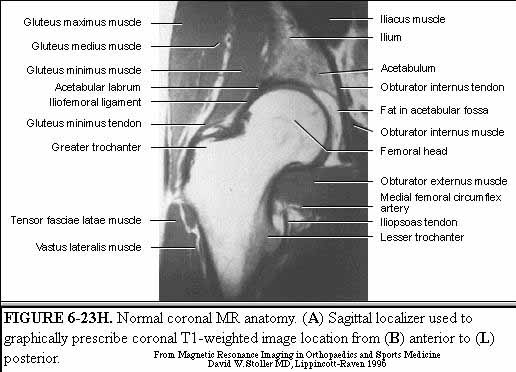Fatigue in the hip
Last updated 27/12/2023 by The pain clinics - Interdisciplinary Health
Fatigue in the hip
A fatigue fracture (also called a stress fracture or stress fracture) in the hip does not occur due to sudden misload, but rather due to overload over a long period of time. The "too much, too fast" principle often comes into play when it comes to fatigue fractures and a typical example is a person who has not jogged much before, but who suddenly starts jogging regularly on hard surfaces - usually asphalt. The hip is one of the most shock-absorbing structures we have - and the frequent jogging on hard surfaces, means that the hip and other shock-relieving structures do not have time to recover between each session, and eventually an incomplete fracture will occur in the hip. A fatigue fracture can also occur due to heavy load from top to bottom. It is very important that a fatigue fracture is investigated and diagnosed - so that you can make the right clinical choices. In the absence of an examination, a fatigue fracture can lead to major injuries to the hip joint.
- Where in the hip is it most common to get fatigue fractures?
The most common anatomical sites that occur are in the femoral neck (femoral neck) or in the transitional attachment between the hip joint and the femur (femur).
- How is fatigue failure diagnosed?
Fatigue fractures in the hip often occur in connection with increased load and can cause pain in the front of the hip when standing upright or when moving - the pain goes away completely at rest. If you have these symptoms then the suspicion and the chance of fatigue fracture or stress fracture increases considerably. The fracture is confirmed by vibration testing and imaging, either by X-ray or MRI. If the X-ray image is normal (it may take time before a fatigue fracture appears on an X-ray image), then you will follow up with a MRI examination. It may also be appropriate to take a DEXA scan on people affected by fatigue.
- Treatment of fatigue violations?
Relief is the main priority when it comes to fatigue fractures in the hip. This is necessary for the area to be able to repair itself. With persistent overload, the leg will not have a chance to heal, and we will see a deterioration - where the fracture actually gets bigger and bigger. During the first and second week, it may be relevant to use crutches to relieve the area - it may be advisable to use specific sole inserts with maximum cushioning. This also applies to footwear.
Complications: - What can happen if I do not take the fatigue break seriously?
If the fracture is not taken seriously, then over time significant injuries can occur in the hip joint, premature osteoarthritis (osteoarthritis), or an infection in the region. This can lead to serious medical consequences and cause lasting men.
- Supplements: Is there anything I can eat to promote healing?
Calcium and vitamin D occur naturally in bone structure, so you may want to think about getting enough of this. Too much NSAIDS pain medication can help slow down the natural healing of the injury.
Image: X-ray of fatigue fracture in the hip
In the picture we see a fatigue fracture in the femoral neck from which an X-ray has been taken.
MRI of fatigue fracture of the hip
MRI examination - explanation of the image: In the photo, we see a classic presentation on fatigue violations in an MRI study.
Related article: - 6 strength exercises for stronger hips
Most shared right now: - New Alzheimer's treatment can restore full memory function!
Other frequently asked questions:
Q: Diagnosis of fatigue fracture MRI? Is it possible to diagnose fatigue fractures using MRI examination?
Answer: Yes. MRI is the imaging assessment that is most accurate when it comes to diagnosing fatigue fractures - CT can be just as effective, but the reason why one prefers the use of MRI is that the latter has no radiation. MRI examinations can in certain cases see fatigue fractures / stress fractures that are not visible on the X-ray yet.
Q: How should you do it after training after a hip fracture?
Answer: The most important thing at the beginning is to give the affected area enough rest so that healing can take place in the best possible way. Then there is a gradual increase that applies when it comes to the amount of exercise. A musculoskeletal expert (eg doctor, physical therapist or chiropractor) can give you the advice you need for optimal healing. In some cases it may be necessary footrest or crutches to ensure sufficient relief of the area.
>> NEXT PAGE: - Hip pain? This is what you should know about your pain!
 Follow Vondt.net on YOUTUBE
Follow Vondt.net on YOUTUBE
(Follow and comment if you want us to make a video with specific exercises or elaborations for exactly YOUR issues)
 Follow Vondt.net on FACEBOOK
Follow Vondt.net on FACEBOOK
(We try to respond to all messages and questions within 24-48 hours. We can also help you interpret MRI responses and the like.)










Leave a reply
Want to join the discussion?Feel free to Contribute!